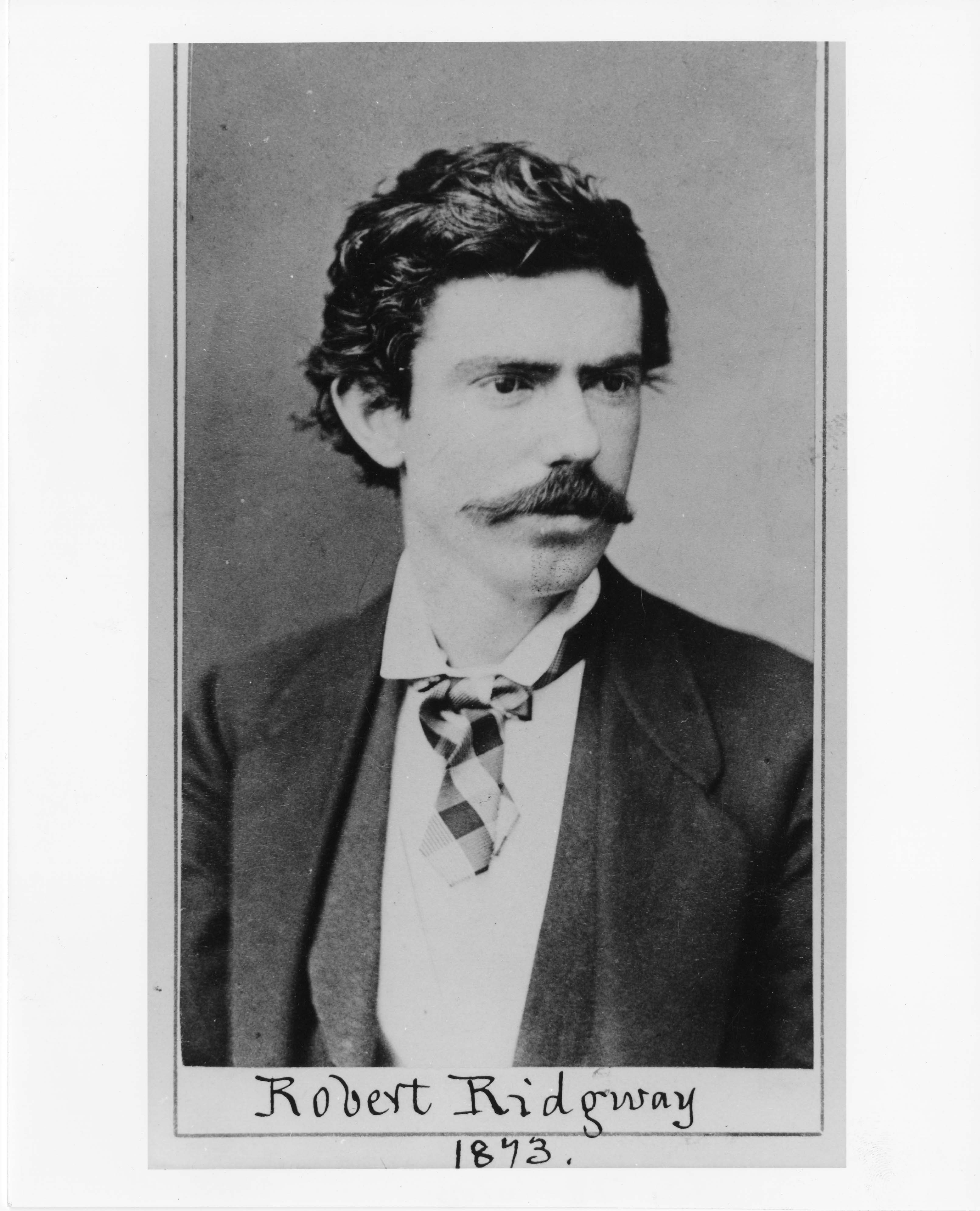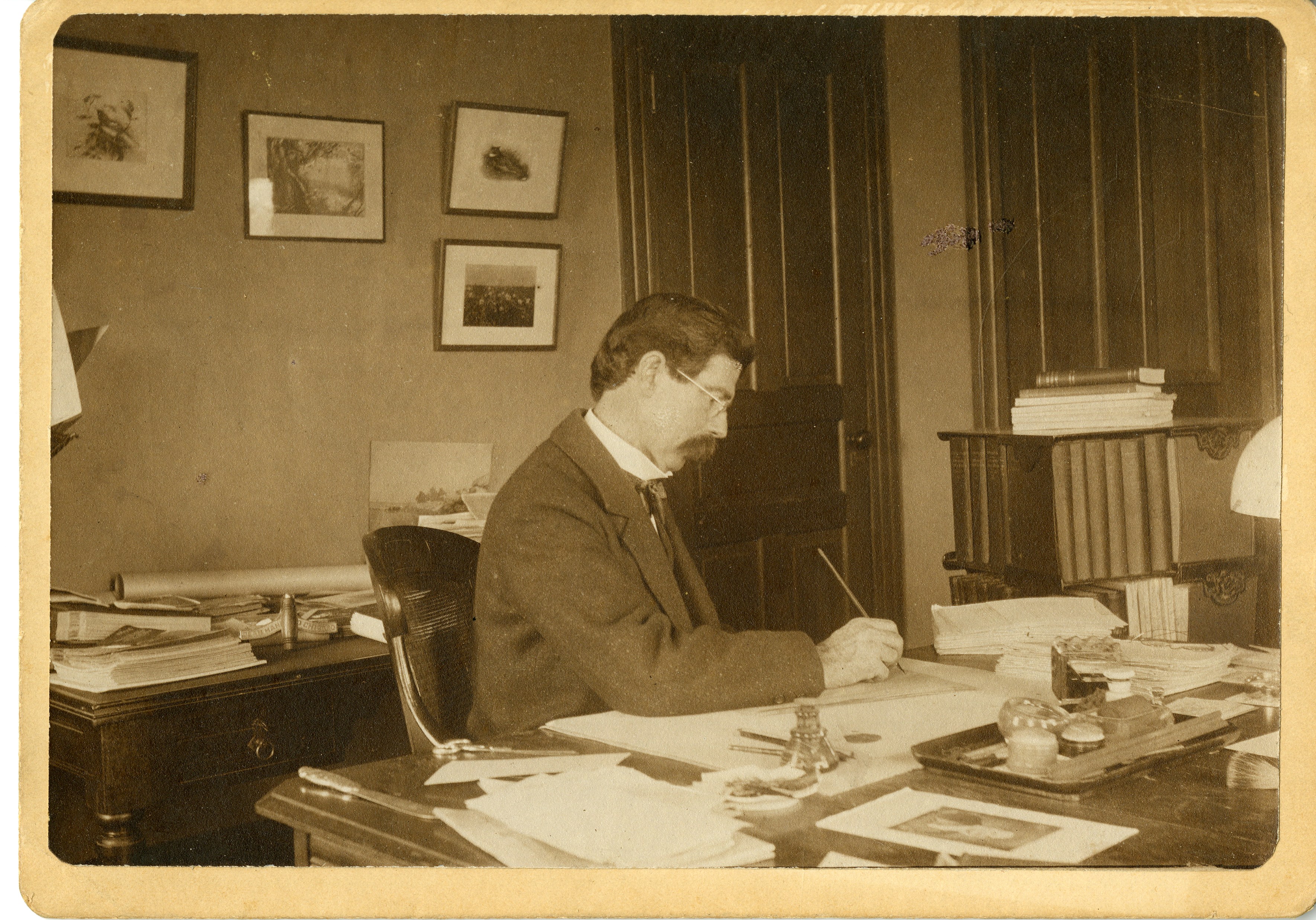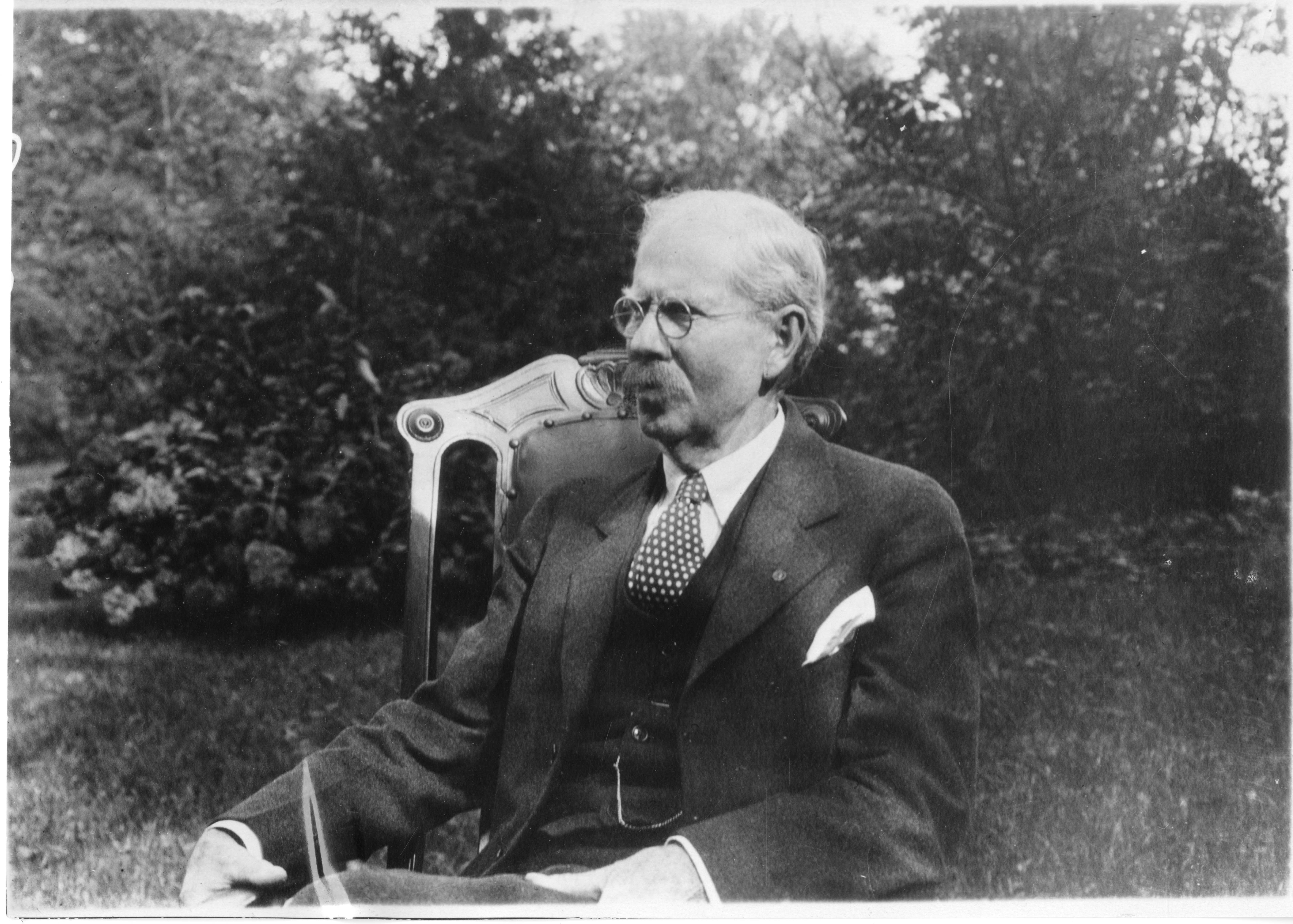A protégé of Secretary Spencer Fullerton Baird (scientist and second Secretary of the Smithsonian), Robert Ridgway was Curator of Birds at the United States National Museum (USNM) from 1869 to 1929. The eldest of ten children, Ridgway had a fondness for the natural world that was nurtured at an early date by his parents. Ridgway's interest in birds began at an early age. When the problem of not being able to determine the name of a paticular bird arrose, it was the mother of a boyhood friend, Lucien Turner, who suggested that Ridgway write to the Commissioner of Patents in Washington, DC. The letter along with a drawing of the bird found its way to Baird, then the Assistant Secretary of the Smithsonian, who identified the bird as a purple finch. The letter was dated June 23, 1864, and in subsequent correspondence, Baird encouraged the young Ridgway to draw birds and mammals, to record his observations, and to prepare specimens.
Showing such fervor and skill, Baird appointed the then sixteen year old Ridgway as zoologist under Clarence King at the Geological Survey of the Fortieth Parallel. After a brief two weeks at the Smithsonian, Ridgway joined the party that he was to accompany for the next two years in New York. Starting his field work in Sacramento, California, Ridgway would continue on to Salt Lake City and the Uinta Mountains.
Upon the completion of his field experience, Ridgway began work under Baird to prepare the description and do some of the drawings for Baird and Dr. Thomas M. Brewer's A History of North American Birds. Ridgway's work primarily focused on American birds, and he would go on to publish eight volumes on the Birds of North and Middle America as Bulletin 50 of the USNM between 1901 and 1919.
The Archives holds some of the personal papers of Ridgway, as well as some of his drawings and field books. On Thursday, Kira, will talk about the rapid capture method used to digitize some of the Ridgway material in our collections.
Related Collections
- Record Unit 7167 - Robert Ridgway Papers, circa 1850s-1919, Smithsonian Institution Archives
- Accession 12-048 - Robert Ridgway Field Books, 1864-1908, Smithsonian Institution Archives
- Ridgway Family Papers, 1864-1950, Utah State University, Special Collections and Archives Manuscript Collection
Related Resources
- Biographical Memoir of Robert Ridgway, 1850-1929, by Alexander Wetmore, National Academy of Sciences
Produced by the Smithsonian Institution Archives. For copyright questions, please see the Terms of Use.






Leave a Comment